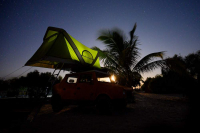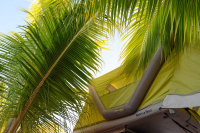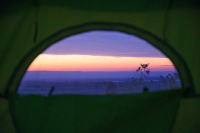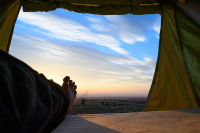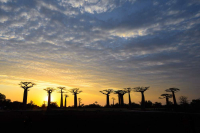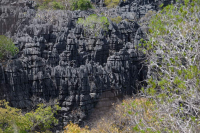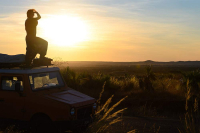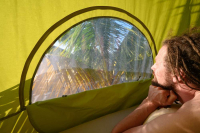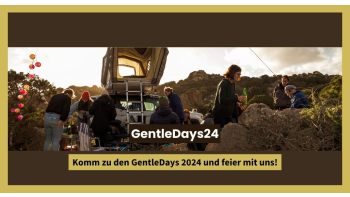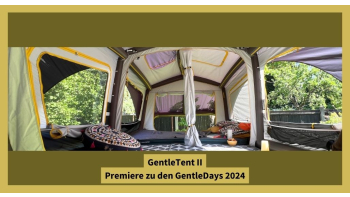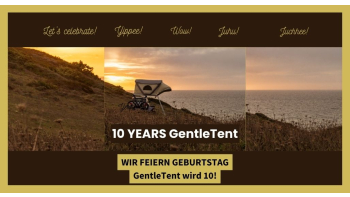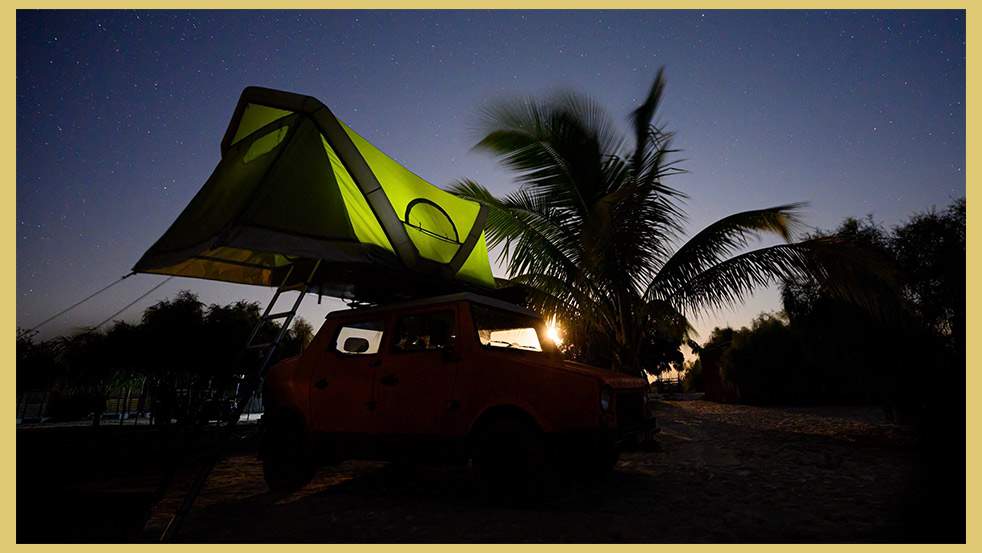
"Madagascar is also called the sixth continent. Not only because of its unique wildlife, but also because the fourth largest island in the world offers an incredible range of landscapes. We planned to drive once through the whole island, from the southernmost to the northernmost point. We have not yet reached our destination, but we have already encountered a variety of landscapes."
The world travellers Sabine Hoppe and Thomas Rahn travel across the island nation of Madagascar with a Mazana II of the local car brand Karenjy and the roof top tent GT ROOF. They report about their whole adventure in detail in the EXPLORER magazine. Meanwhile, they keep us up to date regularly.
Madagascar, the land of diversity: A journey through landscape diversity
The first days were sensitively fresh in the roof top tent in Fianarantsoa, which is located in the southern highlands. On the way to the east coast the landscape quickly became greener, the air more humid and it even felt tropical as we drove through the lush green forests along the east side of the Ankaratra massif.
Bit by bit we made our way south along the east coast, past dreamy beaches and turquoise bays to the dunes around the southern tip of the continent. We encountered a unique vegetation in the dry southwest.
At the moment it is the season with little rain, when the plants are dependent on their water reserves. The thick trunks of the bottle trees, many succulent species and the bizzare-looking baobabs wait for time in heat and dryness before they start to turn green again in the shorty rainy season.
We pulled long dust plumes behind the vehicle as we drove over the sandy tracks to Morondava. Again and again we crossed dry riverbeds, water pushed sluggishly through the flat country only in some bigger rivers west in direction to the channel of Mozambique.
On the long and bumpy way north we again passed the dry highlands around the capital Antananarivo, where rice fields were shining green in all lowlands. Dry grassland blew from there many hundred kilometers beside us, just before the northenmost point, the Cap d'Ambre, again in seemingly tropical regions. Banana trees, coconut palms and mango trees bend in the constant wind of the coast.
Safety instructions for a trip across Madagascar with a roof top tent
To stand freely with the roof top tent in the lonely landscape, as it is possible in many other countries, unfortunately does not work in Madagascar without due caution. The security situation has become difficult in recent years. All locals discourage us from wild camping. There is talk of armed gangs of cattle thieves roaming the country at night and attacking lorries. Beside there are fires, which rage over the grassland, covering large areas in many places. To travel during the day is no problem even in remote areas. Only at night we should not be alone on the way, that's how we have been urgently warned. Thus, we do not stand lonely, but often nevertheless in dreamlike beautiful places in the large plots of restaurants and hotel complexes, at the beach, in the highlands or between palm trees.Conclusion of the roof top tent trip
The trip in the roof top tent across Madagascar was an experiment. It is a lot of fun for us to be on the road. It is comfortable, we feel at ease and are therefore independent of the quality of the often very simple accomodations. It was a good idea to take the tent with us to the island. But we must also make it clear that there are certainly other countries that are much better suited for a trip in a roof top tent. No matter where the next trip will lead us to, we now know that you can take an inflatable roof top tent anywhere in the plane"
Sabine & Thomas
You can learn more about Sabine Hoppe and Thomas Rahn on their website www.abseitsreisen.de. Since their six-year joruney in the old timer Paula truck, with which they once circumnavigated the globe with, they have been reporting on their journeys through photo lectures in Germany, Austria, and Switzerland. In March 2019, after two years of work, they have also published the book ''Sechs Jahre Weltumrundung'' published by Piper/Malik Verlag.
©Photos and Text by Sabine Hoppe and Thomas Rahn for publication. Many thanks for that!

